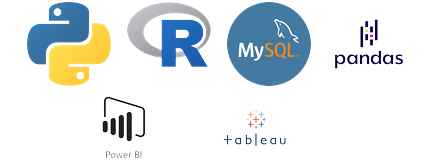At Slidescope we have taught 10000+ students and those who want to build their career as a data analyst always have this question in mind, “How to start my career as a Data Analyst?”. Many blogs and website will tell you about this technology that technology etc. But you should start with understanding what is Data first.
What is Data?
What are Different types of Data?
What is categorical data?
What is Nominal Data?
What is Ordinal Data?
What are different Data Types?
Integer
String
Date
Datetime
Boolean
Binary etc.
When you have knowledge of these things then you can start learning some technology.
Start with Excel. Manage data in excel, whether it is for a company, school, hospital or your own personal financial transactions, learn how to store data in excel.
Once you are comfortable with Excel, you’ll understand how data is entered, sorted, filtered, visualized using charts, and summarized using pivot tables. Excel helps build a strong foundation of data thinking — how to clean, structure, and analyze data manually.
What’s Next After Excel?
Now that you’ve understood how data works on a spreadsheet level, it’s time to move to the next step:
Learn SQL – The Language of Databases
Most data in the real world is stored in relational databases (MySQL, PostgreSQL, SQL Server). SQL (Structured Query Language) is the most essential language for a Data Analyst.
- Learn to write queries to select, filter, and join data.
- Understand how to aggregate data using
GROUP BY,SUM(),COUNT(),AVG()etc. - Practice real-life datasets (employee records, sales data, customer databases).
Tip: Try websites like Mode Analytics SQL Tutorial or LeetCode Database problems.
Learn Data Cleaning & Analysis with Python (or R)
Once you’re good at working with structured data using SQL and Excel, you can now start learning Python (or R).
In Python, focus on:
- Pandas for DataFrames (structured data like Excel tables)
- NumPy for numerical operations
- Matplotlib and Seaborn for data visualization
- Jupyter Notebook for practice and presentations
Start with basic tasks:
- Importing CSV/Excel files
- Cleaning missing or incorrect data
- Filtering and transforming datasets
- Creating meaningful plots and charts
Learn Data Visualization Tools
Data Analysts don’t just analyze — they communicate insights. So, it’s crucial to learn visualization tools:
- Power BI (by Microsoft) or Tableau are top industry tools.
- Learn to create dashboards, charts, KPIs, slicers, and filters.
- Learn to connect live databases and build dynamic reports.
Understand the Business Context
No analysis is useful unless it solves a business problem. Choose a domain that interests you — marketing, finance, HR, operations, healthcare, e-commerce — and try to:
- Learn the key metrics in that domain (e.g. Conversion Rate in marketing, Turnover Ratio in HR).
- Analyze sample datasets to generate insights that matter to the business.
Build a Portfolio of Projects
Practice is key. Use public datasets to work on real-world projects:
- Sales Data Analysis
- Customer Segmentation
- Hospital Patient Records Analysis
- Financial Budget Tracker
- Student Performance Dashboard
Upload your projects on GitHub, write a case study blog, or make a video walkthrough. This builds your personal brand.
Apply for Internships, Freelance, or Entry-Level Jobs
Once your concepts and portfolio are ready:
- Start applying for Internships (even unpaid, remote ones count as experience).
- Create a solid LinkedIn profile.
- Reach out to companies with a short pitch + your portfolio link.
- Mention tools you’re comfortable with: Excel, SQL, Python, Power BI, Tableau.
Summary Checklist to Start as a Data Analyst:
✅ Understand Data Types
✅ Learn Excel (basic to advanced)
✅ Learn SQL
✅ Learn Python + Pandas + Visualization
✅ Learn Power BI / Tableau
✅ Build Portfolio Projects
✅ Learn Business Metrics
✅ Apply to Internships / Jobs
At Slidescope, we help students go through this complete journey — from beginner to job-ready Data Analyst.
If you’re serious about starting your career in data analytics, check out our Data Analytics Course for Beginners – designed to make you job-ready with practical skills and real projects.
Let us know in the comments:
Which part of the Data Analyst journey are you on right now?

